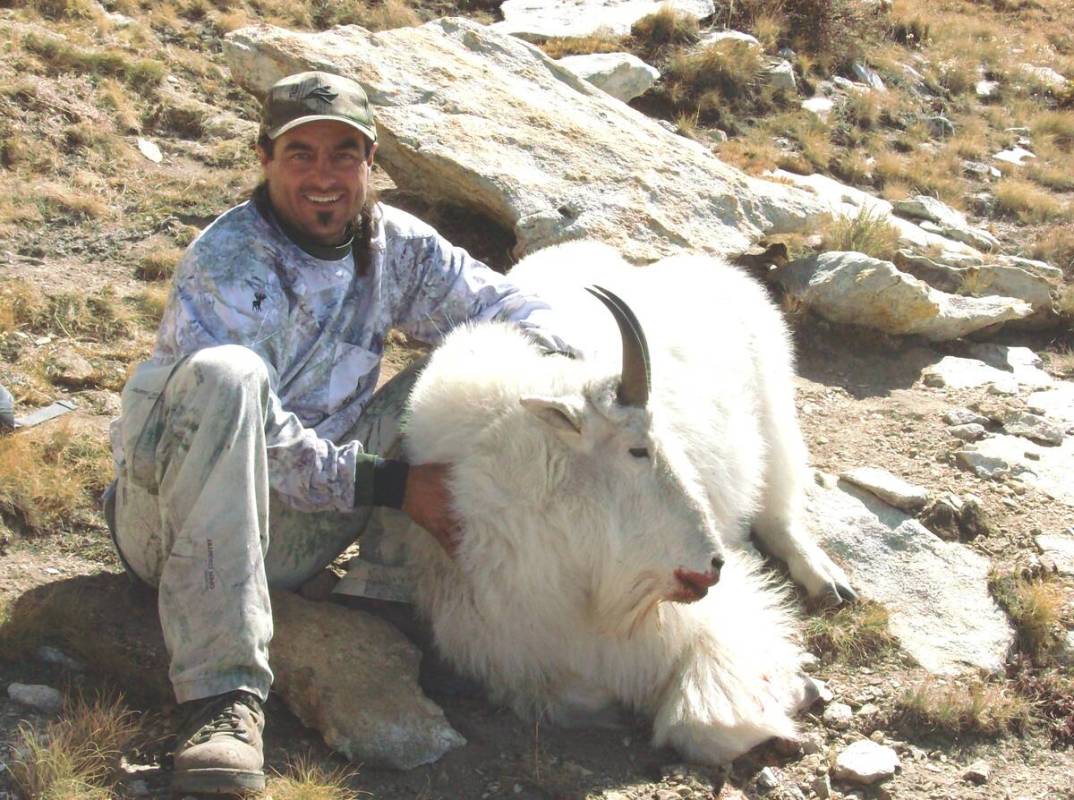
It all started when my friend Mark Genet, like many of us, checked his credit card bill to see if it had any charges to the Nevada Department of Wildlife. There was, which meant he had drawn a tag, and by the amount, he was sure it was a coveted Bighorn sp tag. This was cause for a lot of excitement and phone calls to hunting pals.
A few days later he received notice from NDOW; it was an even greater prize, a once-in-a-lifetime Mountain Goat tag. Mark had not even imagined that possibility. He’d been applying for this tag since his teens and it was the one he wanted most. More excitement and phone calls followed.
One of those first calls was to Henry Krenka of Hidden Lake Outfitters.
The next thing Mark did was join a gym, started seriously working out, and included hiking on weekends in preparation for what is known to be one of the toughest hunts in the world. Mountain goats tend to live in and among the cliffs and crags of the hardest-to-get-to wilderness areas. The Ruby’s are no exception; Mark’s hunting area would be at the 10,000-foot level.
Day 1: He met Henry in the morning as he was rounding up the horses and putting the pack string together.
They ended the day high in the mountains, with a filet mignon steak, a campfire, a sportsman’s toast to good luck, good hunting and good weather.
Day Two: A two-hour ride put them at the top of the tree line; the horses were tied and they hiked through sliding shale, cliffs and rock the rest of the way.
On top, they glassed as they walked the ridges, always hunting from above as mountain goats expect danger from the bottom, unlike desert sheep. As the sun approached the distant mountain tops they found the goats, a group of billies, but too far for a good stalk that late in the afternoon, and one certainly doesn’t want to be climbing down the mountain in the dark.
Day Three: Back to the same area, they began glassing early and found a nice billy bedded where they had seen him the evening before, 350 yards below the hunters. It was time to get within bow hunting distance, so Mark bailed off the cliff.
Three hours later he was on him, 67 yards, still too far to feel comfortable with the bow, so Mark waited for him to move. The goat was on his feet and looking directly at Mark, but not seeing him. It was enough, though. It backed up and was gone, “like a white ghost,” over the cliff.
Day Four: The hunters moved to a new area in the early light and glassed. There, on a cliff below, a nice billy, but a mile away. They started hiking, staying always above the goat, and this time Mark decided to use his 30:06 Remington 700 BDL with 165 gr. Nosler Boat Tails. This he carried as a back-up in his Eberlsetock pack, which has a built-in rifle scabbard. With only one day left of his five-day hunt he wasn’t going to take any more chances with this once-in-a-lifetime tag. He would just have to explain it to his bow hunting purist daughter, Mallory, when he got home.
During the climb down the mountain, Mark slipped on the shale and fell landing on his rifle and scope. He continued on, scratched, but nothing broken.
This time, however, the goat came out at fifty yards, caught Mark’s wind and took off across the mountain at a steady pace. Mark waited for 100 yards and shot – nothing. Shot again – nothing. Guide Henry yells, “aim low, at the belly.” Mark concentrates, aims low, and squeezes the trigger gently – hit. Then another – hit, and the billy goes out of sight behind rocks. The rifle scope had been knocked out of alignment with the fall.
Mark then calls to Henry, “Is he down?” and is answered with, “He’s hit good, but he’s not in the skillet yet. These are tough animals.” As they go down the mountain Henry calls again, “He’s down.”
Now 41 years old, Mark had been applying for this tag since he was 16, and finally – success.
At home Mallory’s first question, “What did you shoot him with Dad?” Mark told of his adventure and her response, “It’s OK, Dad.” She only wished she could have been with her dad – her hunting partner.
If you have a story or comment about this or other articles, please contact me at sportsmansquestdan@gmail.com.